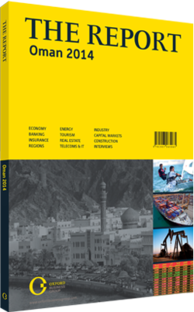Land corridors: Railway expansion aims to improve connectivity and shipping speed
The Oman National Railway Project proposes to link the sultanate’s commercial centres to its main maritime gateways, from Sohar to Salalah, and open up new land corridors. Further plans to connect this system to the GCC rail network would link Salalah, Oman’s biggest trans-shipment hub, directly to Kuwait City, providing a land route for freight through the UAE, Saudi Arabia, Qatar and Bahrain. Once operational, estimated at sometime in 2017, the Salalah-GCC connection could lead international shippers to make Salalah their main off-load point for goods coming in and out of the Gulf.
Faster Shipment
If an adequate rail network existed, shipments from Salalah to the GCC would be faster and less expensive by rail than by sea, according to a 2013 report in the Oman Observer. “For example, freight trains travelling at a proposed speed of 120 km per hour can get containerised goods to their destinations in the Gulf, in some cases, five to six days earlier than if transshipped by sea,” the report said. “Additional steaming time into the Upper Gulf, plus days spent by the container idling at a trans-shipment hub, can add to shipping costs.” Another advantage is that goods sent by rail would no longer need to pass through the Strait of Hormuz, a manoeuvre that incurs high insurance costs for shippers. Together with pending developments of roads and airports, completion of the rail project would give Oman a commercial forward lurch.
Track Extensions
According to the Ministry of Transportation and Communication (MoTC), after expansion, rails linking Oman’s ports would cover 1197 km, and the total track network would stretch 2244 km. The ministry floated tenders for a preliminary design consultancy in early February 2013, and for a project management consultancy in June. It expects to choose the former by 2014, the latter soon after, and sign a design and build (D&B) contract by 2015. Construction could begin soon thereafter. The first phase is meant to run 165 km from Buraimi to the Port of Sohar, then onward to Muscat; the second, 560 km from Muscat to Duqm; and the third, from Duqm to Salalah and Al Mazyona.
The Salalah Port Services Company, anticipating a logistics boom, plans to increase its container capacity by 60%, from 5m twenty-foot equivalent units to 8m by 2015, and then add another terminal as rail and cargo materialise. The MoTC has also invested OR55m ($143m) into its general cargo and liquids terminals, to allow the port to handle 20m tonnes per annum (tpa) of general cargo by 2014. Liquids capacity will climb to more than 6m tpa, making Salalah the region’s entry point for this type of cargo and furthering its role as epicentre to land corridors. New storage and handling facilities would accommodate methanol, monoethylene glycol, caustic soda and, most importantly, fuel. Currently, lack of adequate storage means that trucks must shuttle continuously to and from Salalah, transporting tens of millions of tonnes of fuel. The expansion aims to maintain high fuel supplies while lowering Salalah’s dependency on trucking, and will allow for more efficient industrial development.
Cruise Tourism
Railway expansion will also provide new appeal to Salalah’s cruise ship tourists, who are arriving in ever bigger numbers. In 2011, 29 cruise liners entered the port, carrying 23,202 passengers. In 2012, these figures rose to 33 vessels and 28,159 passengers. These vessels currently dock at the port’s general cargo terminal, but the increasing demand has caught the eye of the MoTC, whose $250m investment in a 3.5-km northern breakwater now includes a cruise ship terminal. “One of the major changes the port has made to its master plan is to change the northern breakwater into a piece of infrastructure that will generate value for the local community through tourism,” the Port of Salalah’s acting CEO, Ahmed Akaak, told OBG. “The vision is to have part of the infrastructure open to the public and have small and medium-sized enterprises set up hospitality businesses while providing the best view of Salalah for tourists.” The terminal would include a community centre and recreation areas. With Salalah eventually connected to the rest of Oman by rail, visitors could traverse the country with ease.
You have reached the limit of premium articles you can view for free.
Choose from the options below to purchase print or digital editions of our Reports. You can also purchase a website subscription giving you unlimited access to all of our Reports online for 12 months.
If you have already purchased this Report or have a website subscription, please login to continue.

